God told the Hebrews when to observe the Passover and Feast of Unleavened Bread. At first, to be honest, the command seems random. But now it makes total sense.
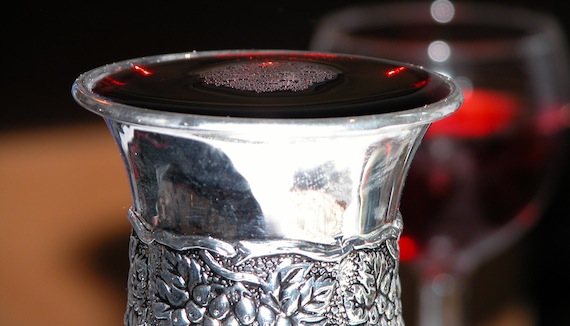
(Photo: Passover Seder cup, courtesy of the Pictorial Library of Bible Lands)
The feasts were to occur at the appointed time of Abib, or Aviv (Exodus 23:15)—a Hebrew word that refers to the time in spring when the grain begins to ripen. The first Passover occurred on the fifteenth day of Nisan, which became the first month of the Jewish calendar.
This timing occurred for good reason. The Lord gave His people a plain explanation why the celebration should coincide with spring:
For [then] you came out of Egypt. —Exodus 23:15
God linked the Passover celebration with their redemption.
But why the springtime? There was a problem with the calendar that had to get fixed. Its fix offers a lasting lesson.
Even for us as Christians.
God’s Chronological Gymnastics
In Nogah Hareuveni’s great a book, Nature in Our Biblical Heritage, I learned that because the Jewish month goes from New Moon to New Moon—or every 29-1/2 days—the Jewish year loses eleven days according to the solar calendar each year.
This has implications for Passover:
- Because the sun determines the seasons and controls a plant’s development, the Hebrews had to compensate to make the lunar month of Nisan correspond to the month in which Abib, or springtime, occurred each year.
- So, about every third year they added an additional month to make up for the difference in calendars.
- If the nation didn’t add the extra month, the lunar calendar would cause the date for the Feast of Unleavened Bread to wander through the seasons year by year. Without the additional month, the holiday would still preserve its historical value, but it would have lost its agricultural connection to the Holy Land.
These chronological gymnastics revealed a simple lesson. By keeping the union between the Exodus and the spring, the Hebrews had a consistent, tangible reminder:
Passover reminds us the same God who redeemed us also provides our daily sustenance. (Tweet that.)
This principle has not changed for Christians (Romans 8:32; Philippians 4:19).
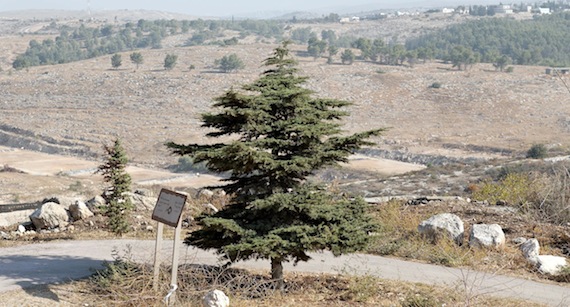
(Photo: Cedar of Lebanon, Neot Kedumim, courtesy of the Pictorial Library of Bible Lands)
The Passover, Hyssop, and the Holy Land
The biblical landscape preserve in Israel, Neot Kedumim, is far more than an arboretum of biblical trees, plants, and gardens. Marvelously designed with the visitor in mind, the preserve purposes to help explain the vital connection the Holy Land had to the Bible itself.
As I strolled among the biblical gardens of Neot Kedumim, I marveled at seeing the flora and fauna spoken of in the Bible, including a tall cedar of Lebanon, donated by the Lebanese army.
I also observed a small hyssop branch and was reminded of David’s plea for forgiveness:
Purify me with hyssop, and I shall be clean; wash me, and I shall be whiter than snow. —Psalm 51:7
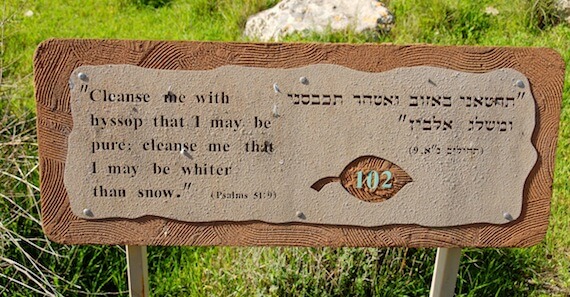
(Photo: Psalm 51 sign at Neot Kedumim, courtesy of Pictorial Library of Bible Lands)
The hyssop plant served as an excellent sponge and found its use in a number of sacrificial rites in Israel—beginning with applying the blood of the Passover lamb to the doorway during the Exodus (Exodus 12:22; Leviticus 14:4ff; Numbers 19:18).
- Out of the 12 uses of “hyssop” in the Bible, 11 occur in the context of purification.
- David’s prayer uses hyssop as a metaphor that indicates the means of his forgiveness: through the blood of a sacrifice.
- I find it fascinating that the only mention of hyssop in the Gospels comes at the very moment Jesus died on the cross at Passover (John 19:29-30).
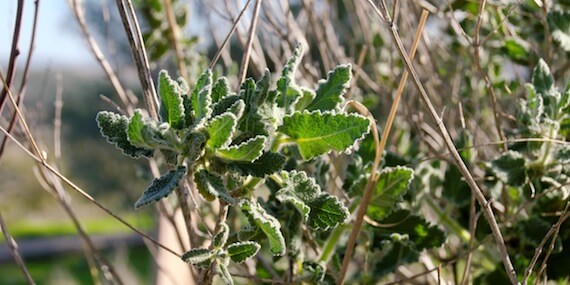
(Photo: Hyssop at Neot Kedumim, courtesy of the Pictorial Library of Bible Lands)
After I left the preserve, I had to marvel at the genius of God.
Whether through creative calendar shifting, or through a little hyssop plant, the Lord used simple elements like time and flora to remind us of our redemption.
We need those regular reminders.
Tell me what you think: What connection do you see between the God who saved you and your daily provision? To leave a comment, just click here.
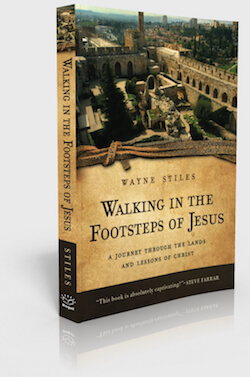 Like This Post? Get the Whole Book!
Like This Post? Get the Whole Book!
This post is adapted from Wayne’s book, Walking in the Footsteps of Jesus: A Journey Through the Lands and Lessons of Christ.
• Enjoy an engaging, inspiring, and humorous travelogue that mingles the life-changing truths of Jesus with a walking tour of the Holy Land.
• Experience the Holy Land through the sights, sounds, and tastes of this personal travelogue, and discover how these sacred places influenced the lessons Jesus taught.
You will discover lessons Jesus has for your life.
